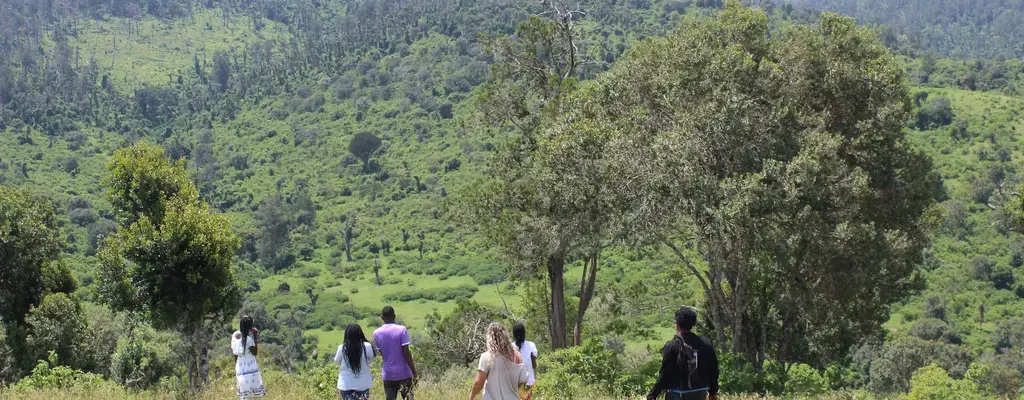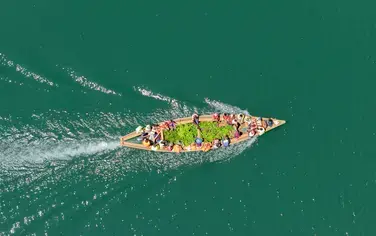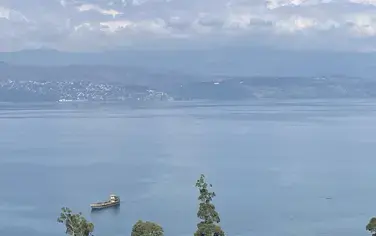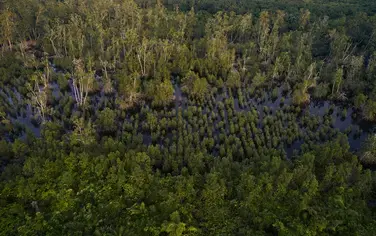By Irene Laigong and Anne Kaari. Cover photo: Kenya Forest Service
Kirisia Forest, located in Samburu County, exemplifies how a dedicated community can drive conservation efforts to restore and protect its natural environment. Managed by the Kenya Forest Service (KFS) and the Kirisia Community Forest Association (CFA), this forest has seen significant reforestation and rejuvenation efforts, underscored by a deep-rooted sense of communal responsibility and partnership.
"The elders played a big role, the curse of the elders and the elephant deaths motivated us to take part in conservation," recalls Douglas Leboiyare, Chairman of the Kirisia Community Forest Association—his words echoing the shift that has taken place within this once-degraded landscape.
In 2019, a watershed event happened when the community, guided by the elders' wisdom, made the collective decision to voluntarily leave the forest they had called home for decades. "The authorities had earlier on failed in this, but we agreed to move out in December 2019," Leboiyare said. This migration marked the start of a journey that would result in the restoration of Kirisia's ecological magnificence.
The collaborative efforts between the Kenya Forest Servic (KFS), the CFA, and The Food and Agriculture Organization (FAO) of the United Nations have borne fruit. Kirisia Forest Station Manager Osango Lubanga shares, "We have planted 34,000 tree seedlings with the help of the community during the 2024 long rainfall season and in the month of May, we intend to plant 15,000 more."
But this journey has not been without its challenges. Insecurity, political tensions, and a prolonged drought threatened to derail their progress. Yet, the community's resolve remained steadfast. "We created committees, including one for protection. Youth volunteered to catch those involved in illegal activities in the forest," Leboiyare explains.
The impact of their efforts has been profound. "The forest has regenerated well since then," he beams, "Reduced by 70%, the reliance on charcoal as a livelihood." This transformation has not only restored the ecological balance but has also opened new avenues for sustainable income generation.
One such avenue is beekeeping, embraced by the CFA with open arms. "We have 300 or more beehives," Antonella Lesekuno, a member of Kirisia CFA noted. "NGOs have supported us with beekeeping, honey production, and links with markets through KFS."
Water scarcity during the dry season remains a significant hurdle, and transportation issues hamper mobility and activity execution. Despite these obstacles, the CFA remains resilient, driven by a shared vision of a restored and thriving forest ecosystem.
Sarafinah Lekaite, an FCC representative, emphasizes the critical role of community involvement and the pressing need for additional support: "We pray for more rains as we continue planting. To expand our efforts, we urgently need more exposure tours and greater support from donors. This will enable us to undertake additional conservation initiatives within our community." She highlights that exposure tours and sustained support from partners like FAO have been instrumental in driving and maintaining their conservation activities. "With increased backing, we can amplify our impact and ensure the long-term health of our environment," Lekaite adds.
As the story of Kirisia's forest revival continues to unfold, the community's unwavering commitment to conservation serves as an inspiration to all. Lekupe Ljenesi, a CFA member, articulates their vision: "We aim to establish a website for the CFA, plant 200,000 trees, and become self-sufficient, even without donor support."
By September 2020, 30,000 hectares of forest land had been successfully reclaimed and were ready for rehabilitation. The restoration efforts brought significant environmental improvements, with the seasonal rivers flowing once again. This resurgence of water sources led to the return of wildlife, including zebras and elephants, revitalizing the forest ecosystem. This natural revival also opened up new opportunities for the CFA to engage in ecotourism activities. Visitors can now enjoy camping and sightseeing, particularly from designated viewpoints that offer stunning views of elephants and other wildlife, fostering both conservation and sustainable economic growth for the community.
Approximately 10,000 squatter households voluntarily left the 91,944-hectare Kirisia Forest, which had been their home for nearly 20 years. These families, mainly from Tamiyoi and Loikas near Maralal town, had moved into the forest due to resource conflicts and the effects of climate change, particularly prolonged droughts that threatened their livelihoods. Their collective decision to vacate the forest marked a turning point in the region's history, demonstrating the community's commitment to restoring the ecological balance and fostering a more sustainable future.
Kirisia Forest, a crucial water catchment area in Samburu County, has rivers and streams that provide water for domestic use in households and Mararal town, as well as water for livestock and wildlife in the surrounding ranches. The forest's hydrology, affected by prolonged droughts and deforestation, plays a critical role in the region's water system. Key water sources include the Nailepunyie Block, with rivers Ngilai, Lulu, and Naashuda; the Nkarro forest block, known for heavy rainfall and rivers like Nonkeek, Baawa, Lbukoi, Moru, and Lolmoti; and the Naramat area, with River Seiya and its tributaries. All these water bodies ultimately drain into the Ewaso Ng'iro River, supplemented by boreholes and wells outside the forest.




